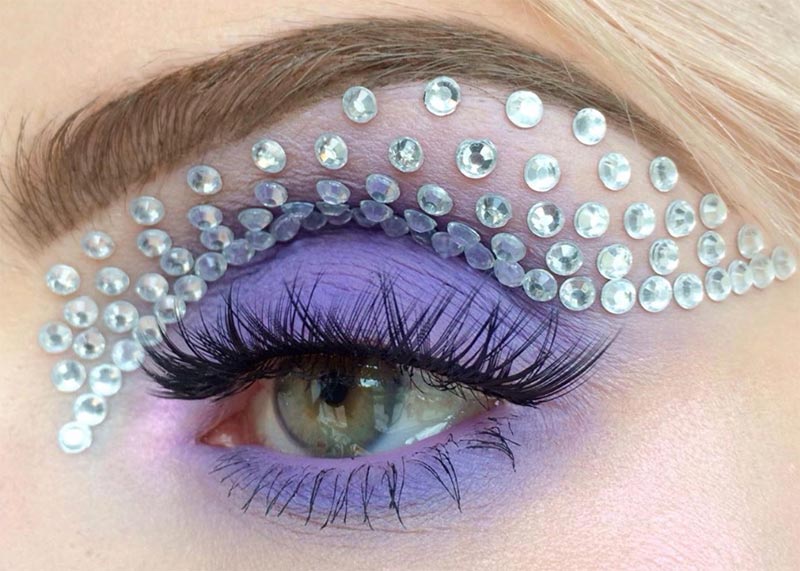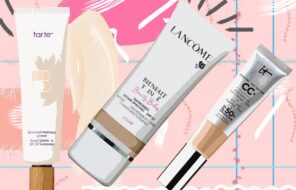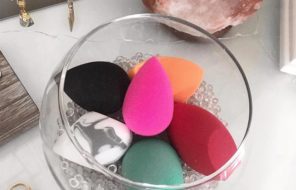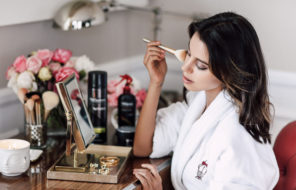From lavender to lilac to royal purple, purple eyeshadow comes in so many beautiful shades that you might be tempted to try them all. But which shade will be your perfect match? We’ll help you figure out which purple, lavender, or lilac eyeshadow will be most flattering to you based on your skin tone and eye color.
Purple Color Theory
Before jumping straight into recommendations, allow me a few moments to reflect on the color theory behind purple eyeshadow. If you remember your elementary school art lessons, then you know that purple is a secondary color comprised of a mixture of blue and red. The amount of red or blue in a purple eyeshadow can differ.
Blue is considered cool, while red is warm, so a purple shadow that has more blue tones in it is considered a cool purple, while a purple shadow heavy on the reds is warm. If it has a truly equal amount of each shade, it can be considered a neutral. Shades like fuchsia and magenta are considered very warm purples.
Then we have to consider how dark or light a purple eyeshadow is, as well as what base is making it so. For example, lavender eyeshadow is the result of cool purple mixed with white, while lilac eyeshadow is the result of a neutral or slightly warm purple mixed with white.
Plum is the result of warm purple shadow mixed with black to make it a little darker. We also have mauve, which is a shade of purple combined with a bit of brown, which makes it earthier.
Eyeshadows are complex, however, since they are made of blends of powder pigments. Sometimes the colors can be better mixed, while at other times a shadow can have flecks in it that contrast the base shade. This is how you can have a plum base with flecks of shimmery lavender, which ends up being both cool and warm at the same time.
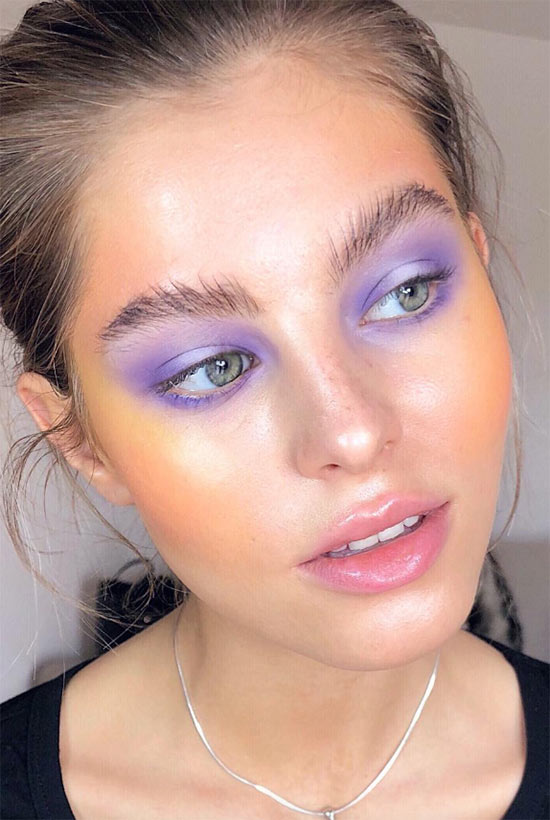
Purple Eyeshadows by Skin Tones
There are two ways to look at skin tone: we can look at how light or dark someone’s skin is, and we can look at its undertones. Matching purple eye makeup to your undertone is a fun but complicated game, but matching it to your skin based on how dark or light it is can be pretty easy in comparison.
With eyeshadow looks, the classic technique is as follows: your lightest shade is a highlight that is 3-4 shades lighter than your skin tone and goes in the inner corner of the eyes and under the brow bone. For those with fair skin, a highlight will usually be a shimmery tone or a cream, while those with darker skin can use lavender or pale lilac tones for highlight, especially if they’re metallic.
Next, we have a middle shade that goes on the lid, and is supposed to be just one shade lighter than our skin tone or a shade that matches our skin tone but has a sheen that makes it reflect light. A transition shade is just one or two shades darker than our skin tone, and finally our darkest shade is 3 or 4 shades darker.
Depending on how light or dark your skin tone is, a lavender shade could be a lid color, a transition shade, or even a highlight. In other words, when you look at a purple eyeshadow and try to figure where it should go on your eye, don’t judge it in the pan – judge it in relation to your skin tone.
If you have a darker skin tone, I have one more tip: look for purple eyeshadows that are more saturated with very intense pigmentation. If the pigmentation isn’t great, the eyeshadow will totally disappear into your skin.

Purple Eyeshadows for Warm Skin Tones
Warm skin tone refers to skin that leans a little bit towards yellow, with veins that look greenish through the skin. Often, cool purples can bring out the yellow tones in the skin in a way that makes you look sallow, especially if you have light-medium warm skin. Stay away from purples that are nearly blue or indigo in color.
Plums and lilac eyeshadows are easily the most complementary choice for your skin tone, since they lean towards cool, but neutral purple eyeshadows will also work nicely. To warm up eyeshadow shades that look too blue, you can always blend them out with a mauve transition shade.
Purple Eyeshadows for Neutral Skin Tones
Those with neutral skin that truly is beige, without any yellow or pink tones, will have the easiest time wearing purple eyeshadows. Both cool and warm purples will look great because there is nothing for purple to bring out or highlight in your skin. You can really play around!
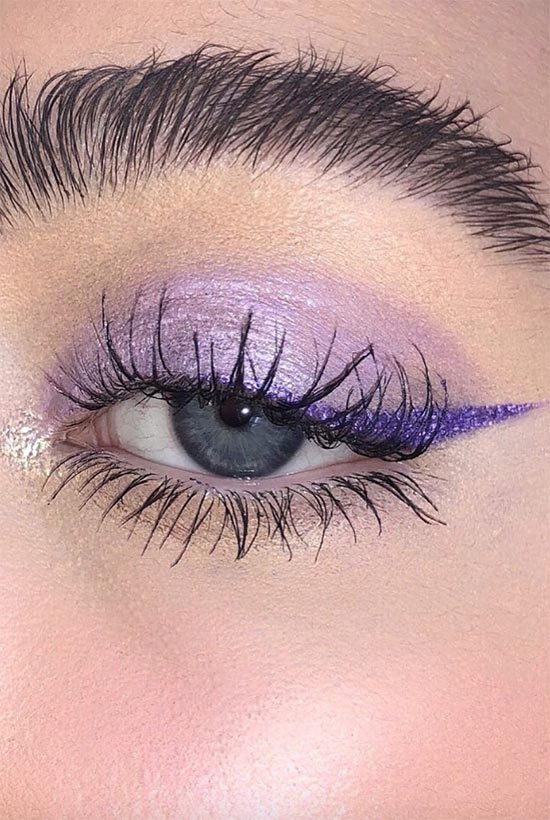
Purple Eyeshadows for Cool Skin Tones
A cool undertone refers to those that have a lot of rosiness in their skin. Their skin is a little more peachy or pink, occasionally with some actual redness in the cheeks. Veins will look a little purple through the skin, as well.
It’s important to look at the chest or forearms rather than the face before deciding you have cool undertones, since the face often has a bit of natural rosiness just because of exposure or sensitivity that doesn’t translate to the rest of the body.
With this kind of skin tone, all shades of purple eyeshadow will work, since purples naturally have the same reddish tones that cool skin tones have. If you’d like a look that will be more harmonious with your skin tone, a cool purple shade is the way to go, which includes lavender eyeshadows and indigos.
Neutral purples will look great as well. Warm purples like lilacs and plums will register as a little more neutral on those with cool skin, so you can even pair them with red-leaning earth tones.
Purple Eyeshadows for Olive Skin Tones
Olive skin refers to those who have a greenish undertone. Veins appear very green through the skin, and in certain lights you may appear more yellow or beige.
Purples are hardest to wear when your skin has olive undertones, because somehow that purple shadow does a wonderful job of making you look sick rather than sexily Mediterranean. Purples that are nearly blue tend to work most beautifully with your skin, while true purples and red-purples will bring out the greenness.
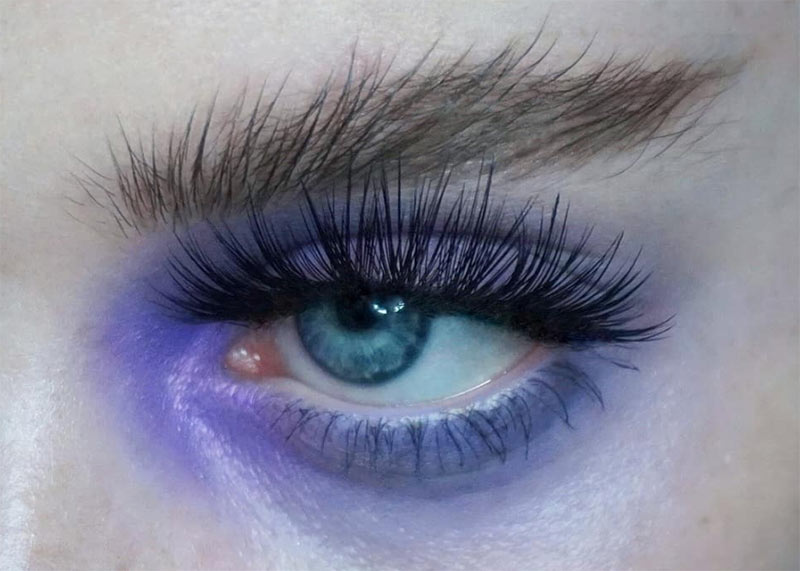
Purple Eyeshadows by Eye Colors
While skin tone matters a lot more when choosing purple eyeshadow shades, you can also take your eyes into account when looking for inspiration. Here are some tips for choosing the right purple eyeshadow shades based on your eye color!
Purple Eyeshadow for Blue Eyes
Warmer purples will stand out a bit more against your eye color, while cooler purples will appear subdued. You can pair purples with other shades that are more complementary to your eye tone if you’d still like a makeup look that stands out. A shadow look that combines purple tones with gold will make for a particularly nice split complementary effect.
Purple Eyeshadow for Green and Hazel Eyes
Purple eyeshadow can really make green eyes pop. This is because green and purple are complementary colors, so they look the most intense when paired. With green eyes you can get away more easily with all-purple eyeshadow looks, so you should definitely consider picking up a full purple eyeshadow palette rather than just a single or two.
Purple Eyeshadow for Brown Eyes
Those with brown eyes can usually experiment with all eyeshadow colors, since brown is a neutral. This means that with brown eyes, you can also play around with various color combinations that include purple along with some wilder shades. Pay more attention to your skin’s undertone when choosing the perfect purples for you.
Photos via @beautsoup, Instagram

